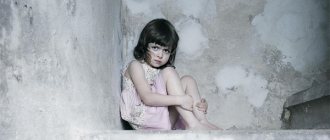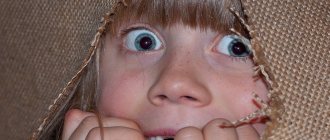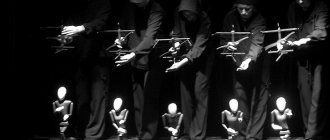Fairytale therapy is a direction of practical psychology, which literally means treatment with fairy tales. Its goal is to help a child or adult solve internal psychological problems. The main feature is the softness of the impact and efficiency. In this article we will consider various methods of fairy tale therapy, as well as options for practical application.
Fairytale therapy methods
Fairytale therapy as a correction method is very effective and capable of solving serious psychological problems . The reason is the positive reaction of people to the fairy tale, regardless of age. Most patients do not experience internal rejection or protest.
Psychologists identify four basic directions in this technique:
- Diagnostic. Helps to identify the scripts that a person uses when solving life situations. Using diagnostics, he determines character traits, personality strengths and weaknesses, talents, life positions, etc. By conducting diagnostics, the specialist determines the root of the client’s problems.
- Correctional. Helps a person create a harmonious image of himself, tune in to a healthy pattern of behavior, and correct negative patterns of perception of the world.
- Prognostic. Helps a person determine what results his behavior and current life position will lead to.
- Developmental. Helps relieve emotional and muscle tension, reduces anxiety, develops imagination, and facilitates adaptation to new conditions.
The effectiveness of treatment with fairy tales lies in the fact that most people perceive the fairy tale very positively, and there is no rejection or internal conflict. At the same time, there is a deep impact on the spiritual and moral level.
Fairytale therapy technique: the function of fairy tales
Every parent can use the fairytale therapy method in raising their own child. There are wonderful fairy tales created by authors specifically for the purpose of soft impact. They are not overly didactic, but they are instructive due to their personalization. The skazzzki.ru project, for example, gives adults the opportunity, with the help of a team of professionals, to create their own personal fairy tale, where the main roles will be the child himself, his family and even, if desired, pets. Read more HERE.
Directions in fairy tale therapy
The methods of working with a fairy tale are very different, since any phenomenon can be described in the form of a fairy tale. Moreover, each specialist uses the fairy tale in his own way. Nevertheless, there are several popular forms of working with fairy tales that most therapists use.
Diagnosis using a fairy tale
The basis of the technique is the patient’s reaction. It is thanks to her that the therapist draws conclusions about the person’s condition, his problems and life situation.
To do this, several conditions must be met:
- Create a trusting atmosphere during the session.
- Show the patient a sincere interest in his problems.
- Sincerity and openness of the therapist himself.
Forms from working with a fairy tale:
1. Telling a fairy tale. The point is to tell the story, not to read it. Real feelings and experiences are very important here. During the session, the psychologist observes the child’s reactions and comments. Sometimes the child interrupts, asks questions, composes another storyline, etc. These are the most important moments in the work; they characterize the patient’s psycho-emotional state.
2. Writing a fairy tale. Here the therapist and the child create a story together, put their feelings into it, dramatize it, and change the plot. Here you can do anything: remake an old fairy tale in a new way, swap the places of good and evil heroes, put yourself in the place of one of them. The technique helps the child open up and reveals hidden emotional states that are not reflected in behavior.
3. Drawing a fairy tale. As a rule, this technique is used as the second stage of working with a fairy tale. The patient is asked to draw, sculpt or make an applique based on the story he heard. Here he can throw out his feelings and worries and free himself psychologically. In poor condition, the patient draws gloomy pictures of monsters, dark colors predominate in the drawing. But with systematic sessions, each subsequent drawing becomes brighter and more positive. For drawing, you can use any suitable materials: gouache, watercolor, pencils, felt-tip pens, etc.
4. Making dolls. The basis of the method is the inclusion of the self-healing mechanism inherent in the psyche of every person. By making a doll, the patient relaxes, stress, anxiety, and fear go away. The person enters a light meditative state. He seems to associate the doll with one aspect of his personality. In fairy tale therapy, the psychologist invites the patient to create a doll based on the fairy tale. It can be any character the patient likes. The technique can be used both as diagnostics and therapy. The result is the patient’s awareness of the problem and the search for a solution through relaxation.
5. Staging a fairy tale. It usually takes place in several stages: reading or telling a story, making character dolls, coming up with a plot, staging.
Each participant can choose a role for himself and give his character the qualities he wants. This can be both a positive and negative hero. He may be similar to the participant, or he may be his complete opposite. Impromptu and a creative atmosphere are very important here. The method is designed to relieve tension and help open up. Participants must be able to express their feelings and sensations. The result is the unlocking of the potential of every child. Children become more sociable, more adapted to life, and come out of their “shell.” Attention! When staging, learning roles, long rehearsals, and a rigid script are unacceptable. Staging a fairy tale is always impromptu.
Fairytale therapy, forms and methods of organization in preschool educational institutions
Fairytale therapy, forms and methods of organization in preschool educational institutions
The peculiarity of fairy tale therapy is that the development of a preschooler’s personality occurs in harmony and agreement with the successful acquisition of literate and coherent speech.
Fairy tale therapy is a psychotherapeutic method that uses the fairy tale form to integrate personality, develop creative abilities, expand consciousness, and improve interactions with the outside world.
Fairytale therapy is an integrated activity in which the actions of an imaginary situation are associated with real communication, a focus on activity, independence, creativity, and the child’s regulation of his own emotional states.
Fairy tale therapy is a method that uses the fairy tale form to integrate personality, develop creative abilities, expand consciousness, and improve interactions with the outside world. Famous foreign and domestic psychologists turned to fairy tales in their work: E. Fromm, E. Bern, E. Gardner, A. Meneghetti, E. Lisina, E. Petrova, R. Azovtseva, T. Zinkevich - Evstigneeva, A. and others .
The enrichment of practical psychology with new means of effective work with children, fairy tale therapy, is a welcome phenomenon of the last decade, according to the definition of Zinkevich - Evstigneeva, fairy tale therapy is the process of searching for meaning, deciphering knowledge about the world and the system of relationships in it. The conditions and means of fairy tale therapy are the process of transferring fairy-tale meanings into reality, the process of activating the resources and potential of the individual. The advantage of the fairy tale therapy method is that it integrates many psychotechnical techniques into a single fairy tale context.
The texts of fairy tales evoke intense emotional resonance in both children and adults. The images of fairy tales simultaneously address two mental levels: the level of consciousness and subconscious, which provides special opportunities for communication. This is especially important for correctional work, when it is necessary to create an effective communication situation in a difficult emotional situation.
The following corrective functions of a fairy tale are distinguished: psychological preparation for intense emotional situations; symbolic response to physiological and emotional stress; accepting one’s physical activity in symbolic form.
Possibility of working with a fairy tale:
1. Using a fairy tale as a metaphor. The text and images of fairy tales evoke free associations that relate to the child's personal life, and these metaphors can then be discussed.
2. Drawing based on a fairy tale. Free associations appear in the drawing, and further analysis of the resulting graphic material is possible.
- A discussion of the behavior and motives of a character’s actions, which serves as a reason for discussing the values of human behavior, reveals a person’s assessment system in the categories: good - bad.
- Playing episodes of a fairy tale. Playing back episodes allows a child or adult to experience some emotionally significant situations and play out emotions.
- Using a fairy tale as a parable - moral teaching. A hint using a metaphor for an option to resolve the situation.
Creative work based on a fairy tale (adding, rewriting, working with a fairy tale)
Fairy tales are divided into traditional (folk) and original. Folk tales are also divided into several groups: everyday tales (for example, “The Fox and the Crane”); fairy tales-riddles (stories of wit, stories of the cunning); fairy tales and fables that clarify some situation or moral norm; parables (stories about wise people or entertaining situations); tales about animals; mythological stories (including stories about heroes); fairy tales, fairy tales with transformations (“geese-swans”, “Little Khavrosheska”, etc.
Any activity contributes to the emergence of personal new formations as a person becomes a member of it. In turn, mastering the position of “I” in fairy tale therapy allows the individual to respond to the proposed situation with his own negative experience and clarify the meaning of the means of linguistic expressiveness in body language, facial expressions, postures, movements
The attractiveness of fairy tales for psychocorrection and the development of a child’s personality is as follows:
- The absence of direct moral teachings and edifications in fairy tales. The events of a fairy tale are logical, natural, follow one another, and the child learns the cause-and-effect relationships that exist in the world.
- Through the images of a fairy tale, a child comes into contact with the life experience of many generations. Fairy-tale stories contain situations and problems that every person experiences in his life: separation from parents, life choices, mutual assistance, love, the struggle between good and evil.
In the fairy tale therapy program, the development of personality and speech of preschoolers is carried out in the following areas:
- Activity: from the need for emotional release - through self-expression in active action - to the activation of figurative vocabulary and positive emotional manifestations.
- Independence: from orientation in the means of linguistic expression, problem situations of fairy tales, in the rhythm and dynamics of musical images - through substantiating one’s own point of view in speech and evidence - to the search for the best ways of self-expression in speech and movement.
- Creativity: from imitation of an adult in emotional and expressive words - through the joint compilation of verbal descriptions based on the perception of pantomimic sketches, tempo-rhythm, musical composition - to verbal fantasy based on musical composition.
- Emotionality: from emotional infection with the images of a fairy tale - through an adequate emotional response to one’s own negative experience in action, rhythm and word - to decentration (understanding the emotions of others) and to the replacement of an “ineffective” style of behavior with a productive one.
- Arbitrariness: from the full experience of the emotional states of fairy-tale characters in problem situations and understanding the meanings of figurative expressions - through the assessment of one's own and others' oral messages and emotional actions - to the dynamic balance of performed movements and speech messages in the game - dramatization.
- Coherent speech: from the continuation of adult phrases - through verbal reasoning regarding the dynamics of musical compositions, the performance of pantomimic sketches, the rhythmization of fairy-tale images - to creative improvisations based on the plot.
The directions of fairy tale therapy are logically connected and are carried out in a complex.
The presentation in the fairytale therapy program is a synthesis of modern methods for the development of speech and personality of a preschooler: verbal methods (director's play, commenting, drawing, improvisation, fantasy), pantomimic sketches, rhythmic exercises, musical sketches.
In the system of work on fairy tale therapy, we have identified three stages of work with preschoolers;
- Cognitive-affective orientation
Goals: understanding the plots of a fairy tale using linguistic means of expressiveness, perception of musical compositions, expressive intonation of the characters’ lines, rhythmization of emotional states, expressive performance in facial expressions and movement of the fairy-tale image.
Game techniques: verbal director's game, psycho-gymnastic sketches, rhythmic exercises.
- Verbal commentary on emotional and affective situations.
Goals: mastering the skills of managing one’s behavioral reactions by drawing up detailed descriptions of the sensations obtained when perceiving timbre, dynamics, and performing expressive movements. And rhythmic pattern.
Game techniques: verbal commentary, pantomimic, rhythmic and musical riddles, relaxation exercise.
- Expression of replacement needs.
Goals: bringing emotional behavior and expressive speech into balance through the transmission of emotional problems and current experiences, needs for games, fantasy in a fairy tale.
Game techniques: for older preschool age, fantasy in music, verbal drawing, pantomimic drawings, pantomimic exercises to overcome bodily barriers.
A special place in this program is given to speech games. They are widely used at different stages of work in close connection with other methods and techniques. In verbal director's play, speech games help children understand the emotional states and actions of characters; in verbal commentary, they deepen awareness of their own feelings in pantomimic rhythmic sketches; in verbal drawing, they lead to the use of mental languages to create psychological portraits of fairy tale heroes. On the one hand, this enriches the vocabulary, on the other, it qualitatively influences the emergence of interest in linguistic richness and independent verbal creativity. Speech tasks help in solving the general goal of each stage of work, therefore, in some cases, they are not singled out as independent tasks.
Game methods and techniques in the program are used in a certain sequence, taking into account the increasing requirements for the development of the child in each group.
The victory of good in fairy tales provides the child with psychological security, so that no matter what happens in the fairy tale, everything ends well. The trials that befall the heroes help them become skillful, kinder, stronger, wiser. Thus, the child learns that everything that happens in a person’s life contributes to his inner growth.
- Lack of specification in the name of the main character and the place of the fairy-tale event. The main character is a collective image, and it is easier for a child to identify himself with the hero of a fairy tale and become a participant in fairy-tale events.
- An aura of mystery and magic, an intriguing plot, an unexpected transformation of heroes - all this allows the listener to actively perceive and assimilate the information contained in fairy tales.
T. D. Zenkevich - Evstigneeva proposed a system of “fairytale therapeutic psychocorrection”, which is understood as the process of getting to know the strengths of a child’s personality, expanding the child’s field of consciousness and behavior, searching for non-standard optimal conclusions and various situations, unconditional acceptance of the child and interaction with him on an equal basis through work with a fairy tale.
The fairytale therapy course developed by the author includes many techniques and forms of work that allow you to develop creative thinking, imagination, attention and memory, sensitivity and coordination of movement, positive communication and adequate self-esteem. A fairy tale can be: analyzed, composed, rewritten, told, drawn, dramatized.
Psychological atmosphere of classes. The central point of fairy tale therapy is the voluntary participation of children. Therefore, the motivation of the participants is important. An adult must find an adequate way to include children in fairy tale therapy. In one case, it may be figurative text, ditties, fables; in another - looking at illustrations, guessing riddles about fairy-tale characters. It is necessary that every child can feel the attentive attitude of an adult.
Not all children immediately join the game. Some of them first want to watch what is happening from the side, and only later do they have a desire to participate in the entertaining spectacle themselves. Taking into account the individual characteristics of children, fairy tale therapy should begin with the one who responds faster to an adult’s invitation; At the same time, it is advisable to additionally motivate the rest of the guys to join the game. Their activity and depth of emotional involvement directly depend on the degree of children’s psychological comfort.
Before fairytale therapy, children are introduced to a fairy tale. This is necessary to get a holistic impression of its text. In addition, when encountering a fairy tale again, it will be easier for schoolchildren to focus on figurative vocabulary that characterizes the appearance of the hero, and to expressively display the emotional state of the character in facial expressions and movements.
The program pays great attention to physical activity. Fatigue after repeated performance of psycho-gymnastic etudes leads to involuntary relaxation of the body and, consequently, the release of emotional stress. Only a small part of the time the children sit on chairs: when telling a fairy tale to adults, fantasizing about a musical composition, the role of the audience in the game of dramatization of individual episodes of a fairy tale.
At the end of fairy tale therapy, judgments do not arise on their own; the adult should ask the children about what games and exercises they liked, remembered, and the roles of which fairy-tale characters they would like to play again. If it is difficult for a child to formulate a coherent message from memory, he is asked to watch a video recording of individual fairytale therapy games. Children's opinions are taken into account.
Between fairytale therapy sessions, you should pay attention to the behavioral reactions and emotions of preschoolers. It is advisable for introverted children to assign the roles of heroes with strong character traits (strong mouse, brave Dasha, kind fellow defender). Children who are prone to stubbornness, whims, and sneaking, in fairy tale therapy in sketches, depict negative character traits, make up comments, stories about such characters (whim, braggart chicken, antics, naughty Vanya). In the future, you can notice positive, effective improvements in mood, development of emotional stability and coherent speech of the child.
Basic techniques for working with a fairy tale
- Analysis of fairy tales. The goal is awareness, interpretation of what is behind each fairy-tale situation, plot construction, and the behavior of the characters.
For example, a well-known fairy tale is selected for analysis. At the same time, the child is asked to answer a number of questions: “What do you think this fairy tale is about?”, “Which of the heroes did you like best and why?”, “Why did the hero commit certain actions?”, “What would happen to the heroes, if they did not commit those actions that are described in the fairy tale?”, “What would happen if there were only good or bad heroes in the fairy tale?”, as well as other questions.
This form of work is used for children aged 5 years and older, adolescents and adults.
Telling tales.
The technique helps to work through such issues as the development of fantasy, imagination, and the ability to decenter. The procedure is as follows: a child or group of children is asked to tell a story in the first or third person. You can invite the child to tell a fairy tale on behalf of other characters, participating or not participating in the fairy tale [18, p. 25].
For example, how a fox, Baba Yaga or Vasilisa the Wise would tell a fairy tale about Kolobok. “Let's try to tell the story of Kolobok through the eyes of Baba Yaga, the fox, Vasilisa the Wise, or the stump on which the Kolobok sat.”
- Rewriting fairy tales.
Rewriting and adding to original and folk tales makes sense when a child, teenager or adult does not like the plot, a certain turn of events, situations, the end of the fairy tale, etc.
This is an important diagnostic material. By rewriting a fairy tale, adding his own ending or inserting the characters he needs, the child himself chooses the turn that best suits his internal state and finds the option for resolving situations that allows him to free himself from internal tension - this is the psychocorrectional meaning of rewriting a fairy tale.
- Presenting fairy tales with the help of puppets. Working with a doll, the child sees that his every action is immediately reflected in the behavior of the doll.
This helps him independently correct his movements and make the doll’s behavior as expressive as possible. Working with dolls allows you to improve and express through a doll those emotions that a child, for some reason, usually cannot allow himself to express.
- Writing fairy tales. Every fairy tale has certain patterns of plot development.
The main character appears in the house (in the family), grows up, and under certain circumstances leaves the house, going on travels. During his travels, he gains and loses friends, overcomes obstacles, fights and defeats evil, and returns home having achieved his goal. Thus, fairy tales are not just a biography of a hero, but figuratively tell about the main stages of personality development. Collaborative verbal improvisation. The adult offers to act out individual episodes of the fairy tale, with the children themselves becoming its main characters.
Thus, new elements are introduced into the fairy tale while maintaining the storyline.
- Verbal imagination based on musical composition. A similar creative task is recommended for older preschoolers.
By this age, children have accumulated a significant vocabulary, developed a critical attitude towards their own and others’ grammatical errors, actively developed imagination, and stimulated creative expression. The children are happy to come up with fairy tales on various topics, they can dream to the music, and speak out about the associative ideas that arise from their impressions. Therefore, special attention in fairy tale therapy is paid to verbal fantasy based on musical composition. So, after listening to a musical excerpt, children come up with possible options for continuing the fairy tale, suitable for the character, dynamics, and methodology of the musical image, and dramatize the invented story.
- Word drawing. Recreating mentally imagined episodes and emotional states of characters in problematic situations requires a certain decentration (the ability to take the position of another). Therefore, this method is designed for the older group.
By this age, the child accumulates life and literary experience. At the same time, the adult helps to apply existing knowledge in new conditions. By discussing how to recreate the image of a hero with the help of paints, the guys penetrate into the sphere of thoughts, feelings and states, rising to a new level of deeper understanding of the emotional subtext of a fairy tale.
Composition of the group. The program is designed for preschoolers with normal development. Fairytale therapy is carried out in subgroups. The composition of each of them should not exceed 12 people. The optimal number of participants is 8-10 people. It is in this range that the effects of group fairy tale therapy can be especially pronounced.
Participation in games of preschoolers with different character traits and levels of coherent speech dynamizes the course of fairytale therapy. At the same time, the group should not have more than one hyperactive, irritable child prone to motor restlessness.
It is advisable to include in each subgroup a child who is able to compose a coherent, integral and grammatically correct message, as well as who is able to expressively convey the character of a fairy-tale hero in movement, facial expressions and rhythm. He not only captivates others with his own artistry, but also, together with an adult, helps peers who have difficulty choosing facial expressions, movements, and rhythm that are most suitable for the emotional state of the fairy-tale hero in a specific problem situation.
Condition of space and time. The most convenient place for fairy tale therapy is a separate, small, well-lit room (fairy tale room, psychological relief).
The room should, if possible, free up excess furniture; you only need chairs for a group of people and a chair for the leader, a soft rug in the center of the room, a stand for a record player or musical cent. There should be no unnecessary objects or attributes that distract the children’s attention.
It is advisable that the room is located away from the music and physical education halls and utility and consumer services premises. A reduction in background noise, as well as the lack of opportunity for situational distraction, has a beneficial effect on the effect of a fairytale therapy session.
It is enough to carry out fairy tale therapy once a week. In the younger and middle groups, the recommended duration of fairy tale therapy is 15-20 minutes. In older preschool age, the duration of a fairytale therapy session can reach 25-30 minutes.
Regularity helps to consolidate a lasting effect in the development of the child’s personality and speech. Another thing to keep in mind is that children enjoy repetition. Therefore, it is advisable to sometimes repeat fairy tale therapy sessions, especially focusing on verbal commentary, partly on creative games with search elements, choosing the most suitable solution to the problem (show the hero, come up with an ending, etc.). After a pause, even inactive children are happy to perform well-signed tasks .
In some cases, the time frame for fairy tale therapy may change, and this should not confuse the facilitator. In cases where the game emotionally captures children, adults should provide the opportunity to satisfy their desire for activity. You can spend more time exercising and relaxing with music.
If preschoolers feel tired, an adult should stop fairy tale therapy and gradually switch attention to another type of activity: sculpt figures of heroes from plasticine, make sketches of the most striking episodes of a fairy tale, play with blots (Look at what from the fairy tale does it look like?, Make a blot for a whim, good well done, Snake Gorynych, witch, good Nastenka, etc.)
Fairy tales can be selected in the form of a cycle of stories, connected by the same heroes with whom various adventures occur. This is convenient, since the child quickly gets used to fairy tale characters, compares himself with them more easily, and, in addition, such a cycle of stories may contain certain ritual moments, commands that are repeated from fairy tale to fairy tale and allow you to successfully guide each session.
The lesson plan can be arbitrary. However, it is convenient when the session begins with a ritual song or game, then there is a small condemnation of what has happened to the children in the time that has passed since the previous session, their successes and failures, after which a series of psychotherapeutic games takes place, depending on the problems of the children participating in the group . Then the children all listen to the fairy tale together, then draw and discuss their drawings. At the end, the results of how the lesson went are summed up and a ritual song or game is performed.
Bibliography
- Zinkevich-Evstigneeva T.D. Workshop on fairy tale therapy. St. Petersburg Speech, 2000. 310 p.
- Markova A.K. Formation of learning motivation at school age; M.: Education, 1983. 96 p.
- Sakovich N. A. Practice of fairy tale therapy. M.: St. Petersburg, Rech, 2004. 224 p.
- Shorokhova O. A. Let's play a fairy tale. ITC Sfera, 2006. 208 p.
- Vachkov I.V. Integrative fairytale therapy as a method of implementing a subjective approach in the work of a school psychologist [Electronic resource] // Bulletin 2010-. No. 2 (12) Russian general education portal (Preschool education). https://www.school.edu.ru/(date accessed 10/5/2014).
Practical use of the fairy tale therapy method in working with children
Writing a fairy tale, practical methodology
The session follows the following pattern:
- The therapist, together with the child, describes the main character who is similar to the child in appearance, character and age.
- The presenter talks about the hero’s life so that the child sees the similarities between himself and him.
- The hero faces a problem similar to the real situation of a child, he has the same experiences and feelings.
- At the final stage, the fairy-tale hero looks for a way out and a situation and successfully finds it.
In this practice, the presenter necessarily involves the child in the creative process, is interested in his opinion, asks questions, and offers options for developing the plot.
but does not insist on them. Attention! When composing a story, you should not call the main character the name of the child, so as not to impose ready-made models of behavior on him. If the technique worked, the child himself will draw parallels between himself and the main character
Meditative fairy tale therapy for children 5-7 years old
The purpose of the practice is to form the energetic foundation of the child’s personality, to compensate for the lack of parental warmth.
Lesson structure:
- The presenter turns on light meditative music and invites the child to relax and close his eyes.
- The therapist draws the child’s attention to breathing; you need to breathe deeply and slowly. Inhale through the nose, exhale through the mouth.
- The psychologist slowly begins to tell the story. Its task is to include all the child’s senses. Through the fairy tale, he should feel the images: what the blue sky looks like, how the stream gurgles, what strawberries smell like, etc. It is important to include all types of sensations (visual, auditory, tactile, olfactory, gustatory).
- At the final stage, the therapist gradually leads the child out of meditation with the following words: “Everything that you have found for yourself in this wonderful world remains with you, we gradually open our eyes and return.” At this stage, it is important that the child retains the sensations from meditation for a longer time, remembers them and learns to enter this state on his own.
This technique reveals the inherent potential in the child, increases self-esteem, and helps to understand various phenomena. Fairy tale meditation is often used when working with children from disadvantaged families.
Staging a fairy tale for children 4-5 years old
The purpose of the technique is to reveal the inner “I” through the image of a toy. The practice is carried out both with one patient and with a group.
How the session goes:
- The therapist shows the children to a box of toys and asks them to choose the main character.
- The presenter tells the children about the hero: what his name is, what his character is. He also invites children to describe the hero and express their attitude towards him.
- The psychologist describes the situation in which the hero finds himself and invites children to build a storyline, play as the hero, and dream up their imaginations. The presenter says the following words: “Imagine that you find yourself on an island, in a fairy-tale country, or have flown to another planet. What are you going to do?"
- More than one character can participate in a performance. If desired, children can choose a few more toys from the box and expand the storyline.
- At the end of the performance, the presenter asks the children questions: How did you feel in the role? Why did you behave this way? What conclusions can be drawn?
The main goal of the practice is to help children express themselves creatively, show their real selves, and learn to communicate harmoniously. Under no circumstances should there be formality or hypocrisy here.
We recommend reading this interesting article: Rounding up the result: fascinating mandala therapy Mandalotherapy is considered a safe and environmentally friendly method of psychocorrection and psychotherapy. In the process of creativity, a person gains integrity and strengthens his own “I”
Let's look at some examples of fairy tale therapy
Let's say the boy Vanya is very afraid of the dark. And so he is told a story about how in one kingdom-kingdom there lived a very brave boy Danya, who is not afraid of anything in this world: neither dragons, nor Koshchei the Immortal, but he has one single fear that spoils everything. Here the child is asked to name this fear himself, and then come up with several ways to overcome it and together choose the one that is most suitable.
Another example. The girl was playing with children and they hurt her. She didn’t tell anyone anything, didn’t call for help, everything became clear only after some time, when the girl’s mother discovered that she was quietly crying, asked, it turned out that the children had hurt her several times in the game. The mother is worried that the child hid his feelings, did not call for help, and did not say anything to the offenders. In this case, you can turn to the fictional tale “The Cat, the Rooster and the Fox.” Tell a fairy tale, and then discuss it with your child, asking questions. For example, how the Rooster was able to escape (he loudly called for help from a friend), or why the Cat saved the Rooster (they are friends, they live together, almost like a family).
So, fairytale therapy helps to gently, without violence, correct a child’s behavior, relieve tension, relax him, educate him, instill eternal values and positive human qualities, teach him to experience emotions and cope with difficulties. With the help of fairy tale therapy, a child psychologist can provide a child with long-term, in-depth psychological assistance in a very easy and unobtrusive form as correctly and delicately as possible.
Fairy tales for fairytale therapy
Fairy tales provided by storyteller Irina Karavaeva. A child can accumulate a lot of baggage in his soul, which will later bear fruit. Fairy tales strengthen the spiritual core of a child.
A fairy tale about a guardian angel Skazka_pro_angela-_khranitelya
Healing sunbeam istselyayuschiy_solnechny_zaychik
Plot
Among the huge variety of fairy tales, the following plots can be distinguished:
- Tales about animals and relationships with them. An interesting fact is that children under 5 years of age identify themselves with animals and try to be like them in many ways, so in this period of life they will be more understandable and close to fairy tales about animals, the life experience contained in stories about animals.
- Everyday tales. They often talk about difficulties in family life, and also offer solutions to conflicts. In this type of fairy tales, the main emphasis is on a healthy sense of humor and on the leadership of common sense regarding troubles and adversities. They introduce us to little family tricks that can make life better. Such tales are optimal when working with teenagers.
- Tales of transformations. We all know the sad story about the Ugly Duckling, who eventually won his place in life and the team. These stories are great for working with those who have low self-esteem or for working with adopted children.
- Scary tales. In these fairy tales there are various evil spirits - ghouls, witches, ghouls and others. In all nations, in the children's subculture, a special place is given to horror tales, which allow children to heal on their own. This method of self-therapy invites the child to reproduce and experience a terrible situation in a fairy tale many times, thanks to which children get rid of accumulated tension and master new ways of responding to the problem. To increase a child’s resistance to stress and relieve him of tension, it is recommended to tell horror stories to a group of children and adolescents (at least 7 years old). However, when conducting such an activity, it is necessary to follow 2 important rules: the story must be told in a “scary” voice, and the end of the story must be very unexpected and very funny.
- Fairy tales. These stories are ideal for children aged 6-7 years. It is a fairy tale that helps create a “concentrate” of wisdom in the subconscious and assimilate information about the spiritual development of the individual.
Work with folk tales should end with careful analysis and discussion. As soon as the hidden meanings and morals are worked out and tied to real life situations, you can begin to use additional ways of working with a fairy tale: dramatization, making fairy-tale dolls, sand therapy, drawing.
3. Author's artistic fairy tale. To successfully combat internal experiences, it is best to choose original fairy tales. Despite the fact that they contain too many of the author’s own projections and experiences, this allows the child to penetrate deeper into the problem and find a way to solve it. For example, the fairy tale “Two Frogs” by L. Panteleev helps adults and children who have lost interest in life, whose strength is running out, who are losing hope. This fairy tale teaches us to fight for our health and for life, to fight for our goals to the last, because each of us has at least one chance and the necessary internal strength that will help us cope with any difficulties that come our way.
4. Didactic fairy tale. Various educational tasks are often framed in the form of these fairy tales. For example, there are mathematical tasks written in the form of a didactic fairy tale. Solving an example in such a task means passing a test, coping with difficulties. Solving a series of examples can lead the hero to success and finally overcome the problem.
5. Psychocorrectional tale. Actually, this is a fairy tale that helps to correct certain patterns of behavior in children. But in order for it to lead to the expected result, it is necessary to adhere to the basic principles when creating it:
- It should be based on the same problem as the child’s, but veiled, without direct resemblance to it.
- In a fairy tale, it is necessary to offer the child a substitute experience, with the help of which the child can choose one or another course of action in order to solve his problem.
The tale must be presented in a strictly defined sequence:
- Once upon a time - symbolizes the beginning of a fairy tale, introduces the current characters. For a 3-4 year old child, it is recommended to tell fairy tales about toys, little people or animals. From the age of 5, you can tell a fairy tale about princes and princesses, wizards and fairies, soldiers, etc. From the age of 5-6, children prefer fairy tales. For teenagers, everyday fairy tales and parables are suitable.
- And suddenly... But then one day... - the hero encounters a problem that resembles the problem of a child.
- Because of this... - hints at what achievement is not happening that the child could have achieved without this problem.
- The climax is, in fact, the direct struggle of the heroes with difficulties.
- The outcome is necessarily positive.
- The moral of the story is that the hero learns a lesson from his experience and his life changes dramatically.
Psychocorrectional fairy tales are intended to have a soft, unobtrusive, non-aggressive impact on children. Correction here plays the role of replacing an unproductive mode of behavior with a productive one. Thanks to them, adults can explain to the child what is generally happening in his life, the meaning of events.
It is recommended to use these fairy tales up to a certain age - up to 11-13 years. There are also some restrictions on the type of problems encountered in children.
To create a psychocorrectional fairy tale yourself, you must act according to the following algorithm:
a) Choose a hero. Which will be close to the child’s personality, but at the same time significantly different. The hero must have similar character traits, age, and gender.
b) Describe the life of a fairy-tale hero in such a way that the child can catch similarities with his own life.
c) Create a problematic situation in which the fairy-tale hero finds himself, and it must be similar to the child’s problem, describe the feelings and experiences that the child himself experiences.
d) Describe the hero’s process of finding a way to solve the problem. Here it is necessary to aggravate the situation, to bring the search to a logical conclusion, which will help push the hero to find the right solution and to change. A fairy-tale hero may come across minor characters and creatures who find themselves in the same situation. At the same time, the hero can observe from the outside how the creatures find a way out of their problems. Here a “wise mentor” may appear who will explain to the hero the meaning of the events taking place. Your task is to show the child the situation and its solution from several sides, provide the child with an alternative, different models of behavior, and help him find the positive aspects of what is happening.
e) The hero of the fairy tale realizes the mistakes in his behavior and takes the right path.
It is not necessary to discuss a psychocorrectional fairy tale with your child; you can simply read it, giving the child the opportunity to independently reflect on its meaning. Thus, the child is alone with his own thoughts. If he has questions or wants to discuss the fairy tale, you should always be ready to answer him, and if necessary, play out the plot using drawings, dolls, figurines or a sandbox.
6. Psychotherapeutic fairy tale. This type of fairy tale reveals for the child the hidden meaning of current events. Such stories help the child see what is happening from a different angle. They may not always have a clear interpretation and they may not always have a happy ending, but they have amazing depth and insight. This is a kind of rhetorical question, pondering which will stimulate the child’s personal growth. Many fairy tales of this type highlight the problems of life and death, paths and love, attitudes towards what is gained and what is lost.
A psychotherapeutic fairy tale sometimes helps where other psychotherapy techniques are completely powerless. They are used if the problem affects the philosophy of relationships and events.
Books on fairy tale therapy
1. “Author's fairy tale therapy”, Gnezdilov A.V. The book by the famous St. Petersburg doctor and storyteller contains his fairy tales that help people cope with difficult situations for them - family problems, loss of loved ones, discover new strengths in themselves and find inner harmony.
2. “Fairy tales and tips”, Kozlova E.G. skazki_i_podskazki
This collection contains 350 problems (with tips, solutions and answers) that were offered in math circle classes and solved by children. The book will be interesting and useful to schoolchildren, their parents, as well as mathematics teachers and students of mathematics departments of pedagogical institutes.
3. “Workshop on fairy tale therapy”, Zinkevich-Evstigneeva T.D. praktikum_po_skaz_ter
The guide to fairy tale therapy is addressed to psychologists, teachers, psychotherapists, doctors, philologists, parents and all those who feel close to the fairy tale genre.
4. “Fairy tales and fairy tale therapy” Sokolov Dmitry skazki_i_skazkoterapia
This book is one of the first and most nimble signs of fairy tale therapy, a popular and rapidly developing area of practical psychology. Unlike “serious” textbooks, it lays out the basics of the approach in an easy and colorful way.
The book contains fairy tales that have independent artistic value, which over the past ten years have been loved by many children and adults who met them through the first editions of this book, as well as through magazines, audio cassettes and puppet shows.
Fairy tales have several functional features:
1. The text of fairy tales can evoke an emotional resonance in both children and adults. Fairy-tale images immediately affect 2 levels of the psyche - conscious and subconscious.
2. As in history, the main and most valuable thing in a fairy tale is a well-chosen metaphor. Its idea may contain a description of vital phenomena, setting goals, vital values, or describe the author’s inner world if the author’s fairy tale is being told.
3. The fairy tale carries symbolic information about how to learn to forgive and how to properly build relationships with others, how to acquire friendship and love and appreciate them, what stages girls and boys, women and men will have to overcome for self-realization, what difficulties can be encountered in life and how to learn to overcome them, who created our world and how this world works, what values should be guided in life, as well as what changes happen to people at different periods of life.
Fairy tale therapy
Emotional instability, anxiety, fear and aggression in a child can be caused by various factors, ranging from a negative atmosphere at home or at school to some insignificant event from the point of view of adults. Moreover, children are not yet fully capable of recognizing the emotions of others and adjusting their behavior in accordance with them. Therefore, the behavior of preschoolers and primary schoolchildren is often characterized by hot temper and touchiness. Notations and punishments from teachers or parents do not always help correct the situation. This is where a fairy tale comes to the rescue.
A fairy tale is one of the most ancient pedagogical ways of transmitting knowledge and educating the younger generation. It influences the conscious and unconscious aspects of the personality, promotes spiritual, social and emotional development, teaches responsiveness, the ability to empathize, distinguish good from evil, and develops imagination. In addition, it amuses and distracts from problems, allowing you to emotionally discharge.
Fairytale therapy is a psychological and pedagogical method of correcting the emotional state with the help of folklore works. Its use at school, and especially in primary grades, is very effective, since children are receptive to fascinating stories and are happy to complete tasks in such lessons.
Sand therapy
Fairytale therapy is a huge freedom for creativity. It can use techniques from many areas of psychology: art therapy, gestalt therapy, psychodrama.
Sand therapy helps to effectively influence the psychological development of a child, as well as correct some of his behavioral reactions. This method of fairy tale therapy is suitable for working with children of any age.
The child is encouraged to work with a tray of dry or wet sand, where he can place small objects or create pictures at his own discretion. Through contact with sand, a child embodies his deepest feelings and thoughts into physical form.
The child's main tool in this method is creative symbolic play and active imagination. This method of studying helps the child independently build a connection between the unconscious and the conscious, between emotions and the mind, between physical and spiritual phenomena, between non-verbal and verbal.
Sand therapy helps not only to diagnose problems, but also to correct them, promote development and provide therapy. With its help, the child learns self-knowledge, self-expression, self-actualization, and learns to relieve stress.
Types of fairy tales
The use of fairy tale therapy in school is very convenient. Firstly, for primary grades this form of cognition is still a highlight due to age characteristics. Secondly, the study of folklore texts is included in the school curriculum. Therefore, additional classes can be conducted only if there is an urgent need for it.
types of fairy tales are used in fairy tale therapy :
- didactic;
- artistic;
- psychocorrectional;
- psychotherapeutic;
- meditative.
Fairy tales of a didactic nature are used mainly during the educational process to study the material. In them, abstract objects and concepts are placed in a fairy-tale situation, which increases children's interest and involvement in the educational process. Information presented in a form that is familiar to primary school children is accepted and remembered by them faster. Such tales can show situations in which the importance of knowledge is revealed. This teaches the student to be diligent and understand the need to study.
Literary texts in fairy tale therapy are folk and original fairy tales, myths, legends and epics. They form in the child an understanding of good and evil, friendship, love and responsibility. Young children do not just listen to the story, but “live” it, identifying themselves with the characters. That is why a fairy tale has more power than moral teachings.
When working with a specific problem of a child, you can choose a work in which a similar situation is present. For a kid who behaves like a greedy person, offer “The Tale of the Fisherman and the Fish,” and for a liar, offer a parable about a boy and wolves.
Psychocorrectional tales are similar to fiction, but are more narrowly focused. They are used mainly to correct certain character traits - untidiness, aggressiveness, shyness. For this purpose, a work is selected or composed in which the hero looks like a child. When the character is looking for ways to solve a problem, the baby does the same. He is offered a different model of behavior, an alternative way out of the situation.
Psychotherapeutic tales are used mainly for treating adults. They are created in the process of working with a psychotherapist, often ending in an “open ending” and leaving the person with questions alone. Understanding them contributes to personal development. Can be used in high school.
Meditative tales are distinguished by the absence of conflict and heroes opposing each other. Basically, these are travel tales that actualize pleasant images, sensations and help you relax.










